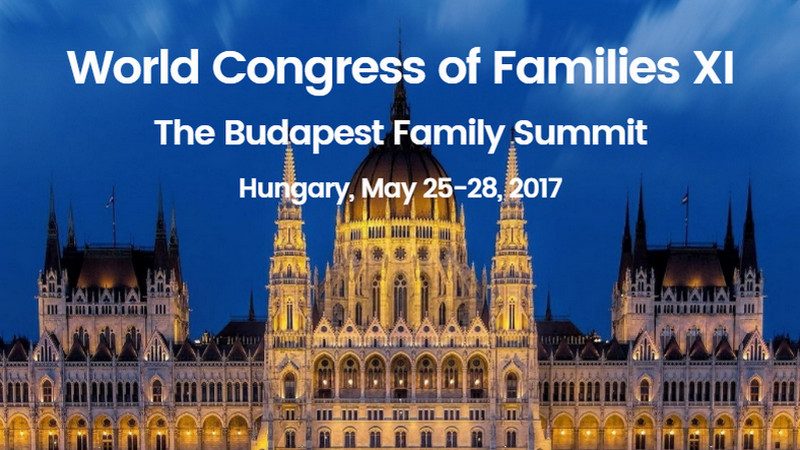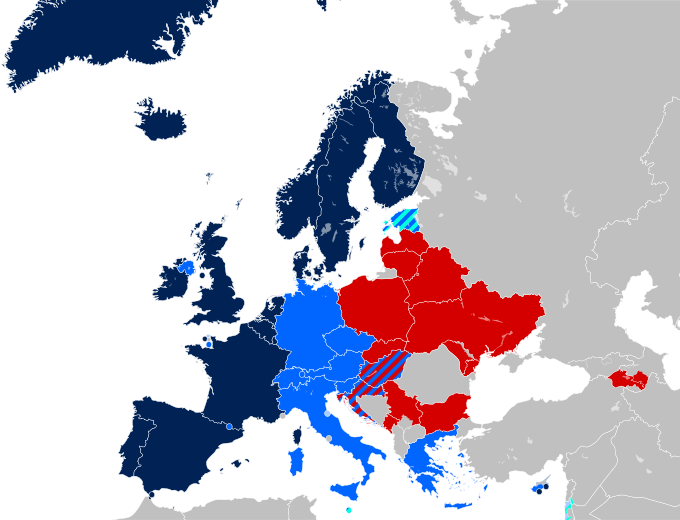By Robert Royal, First Things, June 1, 2017 – Last week, when the leader of the free world was (depending on which sources you paid attention to) either destroying America’s carefully constructed system of international alliances or shaking up the policy establishment at home and abroad to deal with the new world environment, something equally consequential – and more fundamental – took place, almost unnoticed, in Hungary.
I’ve mentioned in passing several times in recent days that I spoke at the Eleventh World Congress for Families that has just finished in Budapest. But it’s difficult to convey what an inspiring and hopeful – and unexpected – event it was.
We almost never hear about it, mired as we are in our political obsessions, but there are thousands of family and marriage activists and organizations at work around the world. Most of them were present in Budapest last week. And most important of all, outside of Western Europe, North America, and their offshoots in places like Australia and New Zealand, countries are not at all following the absurd and suicidal trends on marriage and children that we (falsely) believe have gripped the whole world.
Hungary is a leading example in Europe itself. Prime Minister and former anti-Soviet dissident Viktor Orban has succeeded in starting to reverse the disastrous trends in marriage and births that Hungary, like Western Europe, had been showing for years. This has been the result partly of social commitment, partly of specific policies.
The 2011 Hungarian Constitution, the first one adopted since it regained freedom after the fall of the Soviet Union, states this:
Article L (1) Hungary shall protect the institution of marriage as the union of a man and a woman established by voluntary decision, and the family as the basis of the survival of the nation. Family ties shall be based on marriage and/or the relationship between parents and children. (2) Hungary shall encourage the commitment to have children.
That may seem an empty gesture given the dominant culture of our international elites, but ten years ago, Hungary had a marriage rate of around 3.6 per thousand, the same as Southern European countries like Italy, Spain, and Portugal. Now it’s nearly 4.75, and steadily climbing.

Similarly, the fertility rate in Hungary has gone from the same as Western Europe’s steep decline-and-fall up to around 1.45 – and appears to be heading towards the magic 2.1 needed for population stability. Such changes take time and the Hungarian government admits it won’t get to population stability until 2030. Meanwhile, a whole series of family friendly advantages have been built into the Hungarian system to encourage not only marriage, and then children, but families with three or more kids.
Recovering healthy attitudes towards marriage and family is not impossible if a society recognizes that both are important to human well being and social stability – and the national government doesn’t go on an ideological crusade to destroy them.
In fact, Hungary has pushed back against European Union efforts to expand gay “marriage,” by citing the EU Constitution: “The right to marry and the right to found a family shall be guaranteed in accordance with the national laws governing the exercise of these rights.” [Emphasis added.] Legal relations are always complex, of course, but the European Constitution, like the U.S. Constitution, gives the central government no jurisdiction over marriage and family.
And it’s not only Hungary. The Slovak Republic amended its constitution in 2014 and defined marriage as Hungary has. And that was under a socialist government. In Poland, Article 18 of the Constitution reads: “Marriage, being a union of a man and a woman, as well as the family, motherhood and parenthood, shall be placed under the protection and care of the Republic of Poland.” Romania seems poised to do the same.
Now, these are not the great powers in Europe. Germany, France, the UK – and especially distant America – largely set the agenda for the international community. At least that’s what the sexual radicals want you to think about the powers of the United Nations and other bodies like the World Health Organization.
But look at this:

The dark blue areas are the places where gay “marriage” is legal. But the red countries are places where it is illegal – marriage being defined as between one man and one woman. The light blue areas are in-between, in both a geographical and legal sense: they permit some kind of recognition of “non-traditional” couplings, but do not equate them to marriage.
In a way, there’s a division even in Europe between blue states and red states. For all the claims that marriage, family, sexual morality, etc. have been taken over by “progressives,” which is to say reckless radicals who know not what they’re tampering with, even in decadent, declining, demographically collapsing Europe, there’s significant resistance.
It’s probably no accident that it’s the European peripheries, the parts that were not so long ago under Communist domination, where the resistance is strongest. They still remember the old totalitarians and are not much intimidated by the new ones.
Furthermore, they have the advantage of seeing – in America and Western Europe – where the new totalitarian ethos is leading: to a loss of social fiber and a literal loss of what makes up a society – parents with children.
Of course, for their sane steps to meet the crisis and refusal to use Muslim refugees to replace their missing population they’ve been accused of trampling on gay rights and of encouraging a dangerous nationalism with hints of Fascism.
Viktor Orban has five children. Many of his cabinet ministers and sub-ministers are young people with already large families. And in the rest of Central and South Eastern Europe the top political figures have children, unlike the leaders of the EU, Germany, France, Italy, Great Britain.
Progressive opinion thinks of itself as on the “side of history.” But it’s difficult to say what that progressive future, precisely, might be since it doesn’t seem to concern itself with the literal future of children and societies fertile enough to reproduce themselves.
In the beautiful American phrase, that view of things “is history,” which means it’s already past and has no long-term future at all. And other, more hopeful models are emerging, unnoticed, in a variety of unexpected places.
© 2017 The Catholic Thing. All rights reserved. For reprint rights, write to: info@frinstitute.orgThe Catholic Thing is a forum for intelligent Catholic commentary. Opinions expressed by writers are solely their own.









